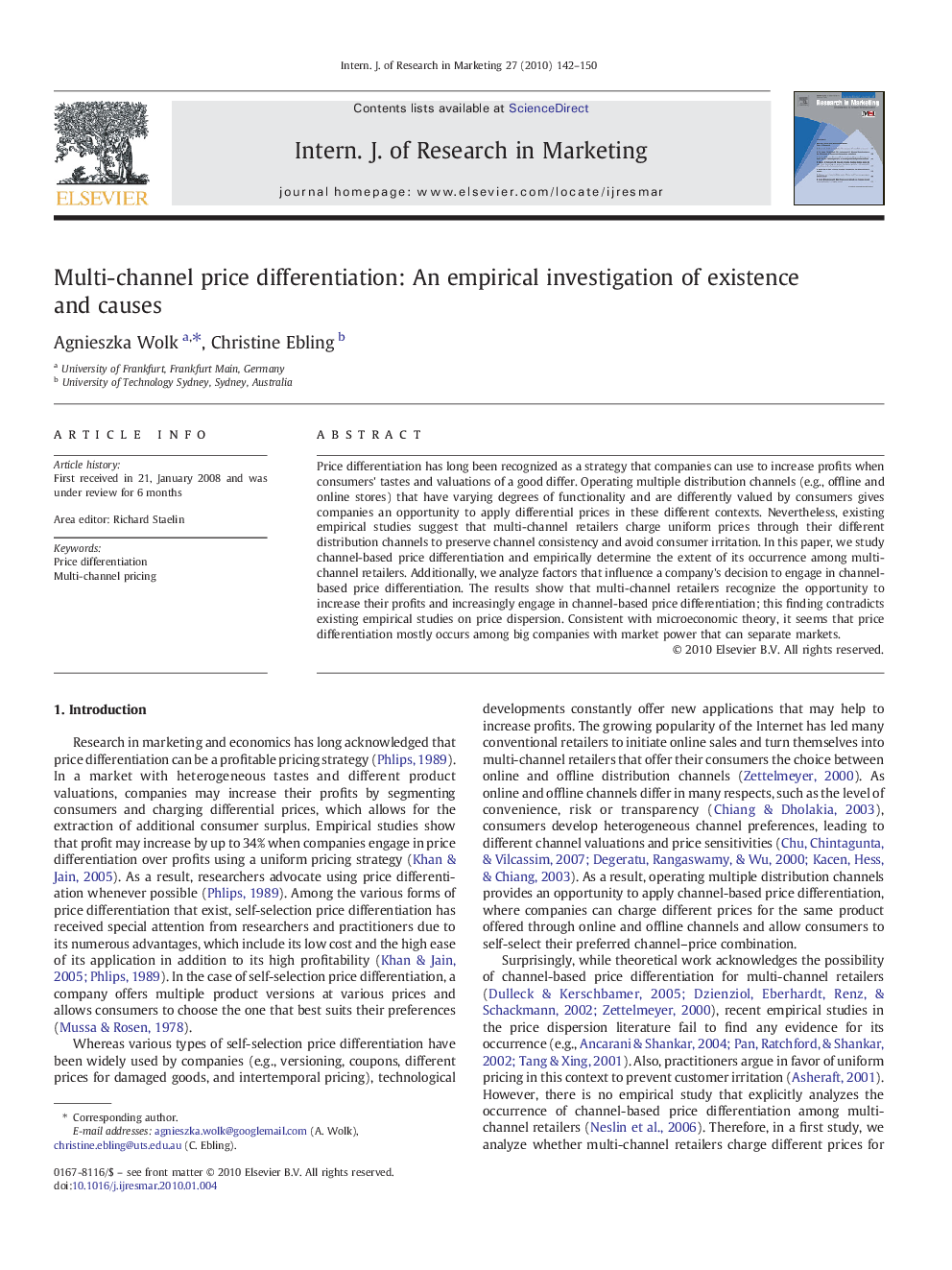| کد مقاله | کد نشریه | سال انتشار | مقاله انگلیسی | نسخه تمام متن |
|---|---|---|---|---|
| 880441 | 1471449 | 2010 | 9 صفحه PDF | دانلود رایگان |

Price differentiation has long been recognized as a strategy that companies can use to increase profits when consumers' tastes and valuations of a good differ. Operating multiple distribution channels (e.g., offline and online stores) that have varying degrees of functionality and are differently valued by consumers gives companies an opportunity to apply differential prices in these different contexts. Nevertheless, existing empirical studies suggest that multi-channel retailers charge uniform prices through their different distribution channels to preserve channel consistency and avoid consumer irritation. In this paper, we study channel-based price differentiation and empirically determine the extent of its occurrence among multi-channel retailers. Additionally, we analyze factors that influence a company's decision to engage in channel-based price differentiation. The results show that multi-channel retailers recognize the opportunity to increase their profits and increasingly engage in channel-based price differentiation; this finding contradicts existing empirical studies on price dispersion. Consistent with microeconomic theory, it seems that price differentiation mostly occurs among big companies with market power that can separate markets.
Journal: International Journal of Research in Marketing - Volume 27, Issue 2, June 2010, Pages 142–150